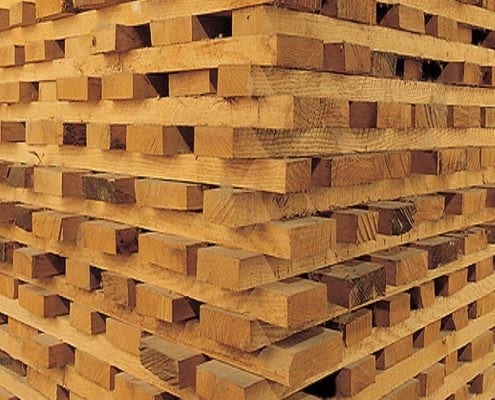Decorative curves and edges are certainly one of the most fun aspects of any woodworks. It is interesting to find out that the hard body of a wood can be traced, cut, and curved just like a soft material. All of these are possible because of the magnificent tool called the router. Routers are mostly used for making decorative edges in woodworks like cabinetry. So how does one operate this wood cutting tool?
The Basics: What is a Router?
A rotary wood cutter is a high-speed spinning tool with a bit at the end of the motor’s shaft that allows the user to smoothen, to curve, and to polish the edges and several parts of the wood. There are the countless amount of possibilities for the design by combining different routers and bits. Truly, the machine is a versatile tool that can enable the user to make several patterns and rabbets. One should just know how to operate it properly according to the design he or she has in mind.
There are several aspects involved when using the router machine. The parts of this machine involve the motor, the handle, the measurement indicator, and the drill bit socket or the collet. Several router bits can be bought externally to be used as a tool in cutting the wood. Several modern routers even have a speed control to enable the user to have a freer control of the rotating speed.
Getting Started

First, you have to thoroughly check and study the manual included in the package of your wood router. This will allow you to easily adjust with the usage of the said tool.
Furthermore, here are some tips that may probably help you during the course of your study with the router. Several machines have a stopper block than can store many settings at one go. Because of this, you will have a faster working time since the router is more versatile due to the stored settings. Furthermore, you may want to apply a uniform speed all throughout the duration of your routing.
This will help you achieve a cleaner and a more polished surface on the wood. Do not attempt to slow down the spinning speed of the router since this may result in an uneven cut and rougher exterior of the wood. Try using different combinations of drill bits so that you may weigh the difference of each bit to the wood. All of the router bits can be bought either separately, or in sets.
Step By Step Instructions For How To Use a Router
Step 1: Attach the Router Bit

To be able to attach the router bit on the motor’s shaft, you should first place the router machine on a steady bench. Remember that the machine should be unplugged to avoid unnecessary accidents. When all of these are in this status, you can now insert the bit firmly to the collet.
Keep in mind that you need to tightly attach it to the end of the motor’s shaft so that it would not be removed once the router spins. You should carefully do this to avoid having the risk of several flying router bit debris hitting you. Nevertheless, you should wear a face mask and protective goggles just for the sake of precaution.
You can try experimenting the different router bits available in the market. These bits can make different designs and cuts on the wood.
Step 2: Router Bit Depth Setting

In order to perfectly design using the router bit, it is important to have a perfect depth setting in the machine. This will allow you to follow the specification and design of the woodwork you are going to do. In order to do this, you should place the router on a level platform, and then adjust the router until the router bit touches the surface of the platform. Tighten the lock of the router after you have done this.
Other router machines have a different way of setting the router depth. For routers that have a plunger capability, you would not need to lock the router for a certain depth. The plunger capability of the router will allow the machine to go back up when you release the force exerted to the router.
Nevertheless, just keep in mind that the measurement of the depth needs to be in line with how much the router bit is exposed. Calibrate and read the depth measurement in accordance with this factor.
Step 3: Router Cut Depth Setting

Once you have set the router bit depth, you need then to make adjustments for the cutting depth. Place the router bit at the depth you want to cut. After that, release the lock to allow the router to go up while you check if the depth is adequate and accurate for the cut that you want.
For the plunger type of router, you may want to gradually decrease the amount of pressure you are putting on the router to slowly allow the machine to lift up. Remember that you are still not cutting anything at this point. You are just checking the settings before you do the actual cutting and routing. This is important since wrongful cutting will cost you a lot of money and materials.
Moreover, you should try to remember what drill bit you will use in particular portion of the wood. Always check your design so that you will not be mistaken on what router bit to use.
Step 4: Start the Router

Once you have convinced yourself that the necessary and correct measurements have been made, you can now start the router for the cutting process. Gently and slowly move the router across the shape that you want to make. Furthermore, move the router while judging the output of the cutting process.
If the output is not yet polished, cut it more thoroughly using the router. You should also consider the speed and time of exposure to the router bit in accordance to the hardness of the wood. Lastly, remember to let the spinning motor stop before you remove the router in place. This will allow the router to clean up and polish the cutting process it is doing.
Step 5: Cutting in Straight Lines

For cutting straight lines, a fence is recommended to be used in order to guide you through the process. To do this, attach the fence near the portion of the wood you want to cut. Move the router while remaining in contact with the fence. This is to ensure that you are being guided to make a straight line movement.
The drawback of using the fence is that you would not be able to make straight line cuts if the portion of the wood you want to cut is not on the edge of the wood block. Nevertheless, the fence is the perfect tool to help you make that straight line cut. You may want to make several passes in cutting the wood if the result is not as polished as you want it to be.
Step 6: Refining the Unrefined

After you have done the cutting process, recheck the output for any blemishes or unbalanced portions. If there are still portions of the wood that are rough or chipped, redo the routing process. Use several tools to make sure that the output is clear and smooth. You may want to use a sandpaper to further refine the woodwork produced by the router. Furthermore, you should also use a bubble level ruler to check any inconsistencies when it comes to the measurement of the wood.
Step 7: Caring and Maintenance of the Router

After using the router, keep your machine sparkling clean and new by straying them away from dust and high heat. You might also want to remove any moisture that may cause the router to be rusty. Wipe all of the remaining wood dust that may have accumulated in the drill bits.
Furthermore, spray some protective lubricants to the parts of the router so that you will be sure it is not rusty the next time you use it. Apply additional attention to the router bit holder since rust and dirt can easily accumulate in the hidden edges of that part of the machine. Store the machine and its parts in a dry place.
Conclusion
Woodworking is a fun hobby and work given that you know how to properly work with the tools at hand. It is all the more exciting with the help of the decorative cutting tool called router. A router is a very powerful and useful tool that can allow you to cut curved edges and designs out of a hard wood block. If you are a beginner, you may find using the tool intimidating and hard.
Nevertheless, you should just follow all of the instructions mentioned above and you will be a professional in no time. Just remember to be safe at all times when you work in your workshop. A high spinning metal can cause a serious damage if you are hit by it. Thus, always check your workplace for any lying metal before turning your router on.






